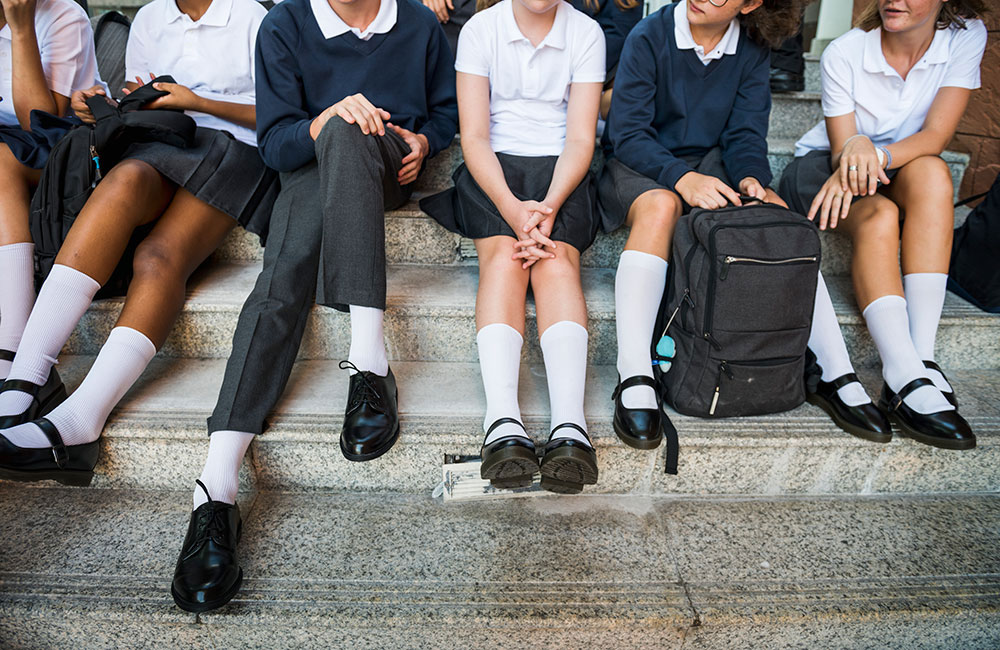Schoolwear Association briefing: Education (Guidance about Costs of School Uniforms) Bill

Ahead of the report stage of the Education (Guidance about costs of school uniforms) Bill on Friday 12 March, The Schoolwear Association welcomes the Bill in principle and supports the proposal to place school uniform guidance on a statutory footing.
However, it highlights it is critical that the Bill is implemented appropriately and sufficient time is given to schools and families to introduce the guidance to avoid any unintended consequences. This briefing provides information on the Association’s position, which builds on the work of its recent report, ‘Shining a spotlight on school uniform’.
Commenting is Matthew Easter, co-chair of The Schoolwear Association.
“We welcome Mike Amesbury’s Private Member’s Bill and support efforts to place uniform guidance for schools on a statutory footing to improve consistency across all schools.
“However, the implementation of the Bill is critical to ensure that we do not see the unintended consequence of the many benefits of school uniform lost from our schools. There is broad support from families, schools, educational bodies and across government that school uniform helps to create a strong school identity and ethos for learning, encourages higher educational standards, and reduces bullying, not to mention the hugely positive impact on social cohesiveness in our schools.
“Deregulating how uniform is sold would have the effect of undermining the whole concept of uniform being the same for all and could risk an increase in peer pressure and bullying at a time when the mental wellbeing of our young people is under greater strain than ever before.”
Ensuring the statutory guidance works for families and schools
The Schoolwear Association supports placing aspects of the current guidance on a statutory footing. It considers this is likely to ensure that all schools have an appropriate uniform policy in place. The guidance should, therefore:
- Clearly state that sole supplier arrangements are allowed – and can add value – as long as robust and competitive tendering processes are in place, which the Association strongly supports. Sole supply arrangements provide better value for money for families; ensure better year-round availability of products for all pupils, and allow for retailers to provide tailored affordability support to those who need it.
- Maintain a robust and competitive tendering process for school uniforms. In support of this, the Association will be issuing practical guidance to support school leaders through the procurement process.
- Consider a range of factors that contribute to an effective school uniform policy. This includes the quality, durability, sustainability, availability and supply of clothing, as well as its cost.
- Require schools to provide affordability measures support to those who need it, with a duty on uniform retailers to provide this through the Association’s Code of Practice.
- Require schools to work with retailers who can guarantee year-round availability of uniform in a wide range of sizes.
If the Bill is not implemented appropriately, there is a risk of unintended consequences:
- Relaxing uniform requirements risks creating greater inequality in schools; creating pressures on families to buy the latest fashion trends, thereby increasing costs for families.
- Deregulating or removing branded items from school uniforms undermines consistency and uniformity. It will make it harder for schools to have a clear identity.
- Ending sole supplier arrangements would make it harder to guarantee uniform supply and would drive up costs for families.
- Changes in uniform policies may require parents to buy new items before they would otherwise need to do so.
Implementation and timing of the guidance
- The Association emphasises that it is critical policymakers introduce the guidance in a gradual and phased way. Therefore providing schools, families and retailers sufficient lead in time to implement the new measures.
- This is particularly important for school leaders, who have been navigating the challenges of Covid-19. They will need time and capacity to properly adapt to changes to their uniform policies.
- Introducing the measures too quickly could be expensive for parents. They may have to purchase new uniform items before their children have grown out of them.
- Uniform retailers are largely high street family businesses whose sales will have been impacted by lockdown. They are sitting on high stock levels, so to avoid wastage, they need sufficient time to sell their existing stock.
- From publishing the guidance, schools should have 18 to 24 months to implement it. While the Association wants to work with the department to develop the guidance as soon as possible, it would cause significant unintended consequences for families if schools feel they must retender uniform contracts and introduce a new uniform policy within the next year.
The true cost of school uniform
An accurate understanding of school uniform costs is essential to develop an effective policy framework. To inform this debate, earlier this year The Schoolwear Association surveyed uniform costs; looking at the actual spend by parents on branded uniform items across 12% of secondary schools in England. This revealed:
- The average basket price for branded garments for a child starting school for both uniform and sportswear is £101.19.
- As uniform lasts over a year, the average annual spend on uniform for a child in secondary school is £36.24. Or 18 pence a day.
- The average school had three compulsory items of schoolwear and three of sportswear.
Complementing The Schoolwear Association’s analysis was the largest ever survey of uniform costs in the country. It surveyed over 2,500 parents and 170 school leaders. Findings show that for seven in ten parents, and three-quarters of headteachers, the cost of compulsory, branded school-specific uniform and sportswear was less than £100 for a new school starter.
By contrast, the Children’s Society’s research on the cost of uniform is based on the perception, rather than the reality, of costs from a much smaller sample size of parents.
Commitment as an industry
- Schoolwear Association members will continue to work closely with schools to ensure their uniform policies are as proportionate and reasonable as possible.
- Where sole supplier arrangements are in place, members will continue to support children in low-income families; providing hardship measures such as swap-shops, second-hand uniform sales, payment plans and voucher schemes.
- Schoolwear Association members will ensure that sustainability, quality and ethical sourcing are important considerations in the production of its school uniform garments.
- The Association’s members will ensure that parents have year-round access to the garments they need. They will also be able to meet parents’ requests for all sizes and colours of items.
For further information on The Schoolwear Association, please click here.













